Eye Catching Houseplants with Striped Leaves (9 Striped Leaf Indoor Plants)
House plants not only add color and a touch of nature to your home, but in most cases can also improve the air in your home and help you to create a calming ambiance for you and family.
However, most people who grow houseplants prefer to grow plants that are different sizes and want at least a few plants that have a distinctive look to add a bit of drama to their home decor.
Plants with striped leaves are quite eye catching and can become a focal point of your plant collection.
Many of the striped leaf houseplants mentioned in this article can also be grown out of doors in certain areas.

Related Articles:
- 8 Indoor Plants with Red Leaves
- 15 Stunning Plants with Variegated Leaves
- 13 Plants with Large Leaves for Indoors and Outdoors
9 Indoor Plants with Striped Leaves
#1. Spider Plant

One of the most popular and well known of all striped leaf plants is the spider plant. The spider plant is a tropical plant that can be grown indoors (or outdoors in zones 9 through 11).
The plant consists of either solid green or green leaves with a white stripe that consists of rosettes of arching leaves that tend to run between 12 and 18 inches long. As the plant matures, it sends out long stems that bears small white flowers, when the flowers fall off “baby spiders” appear.
Fully mature, the spider plant stands between 1 and 2 feet tall with the spiky pointed leaves drooping downward. These plants make great hanging plants.
Since spider plants are tropical they do best in direct sunlight or partial shade and need regular watering. The baby spider plants can be planted once they develop roots.
#2. Watermelon Peperomia
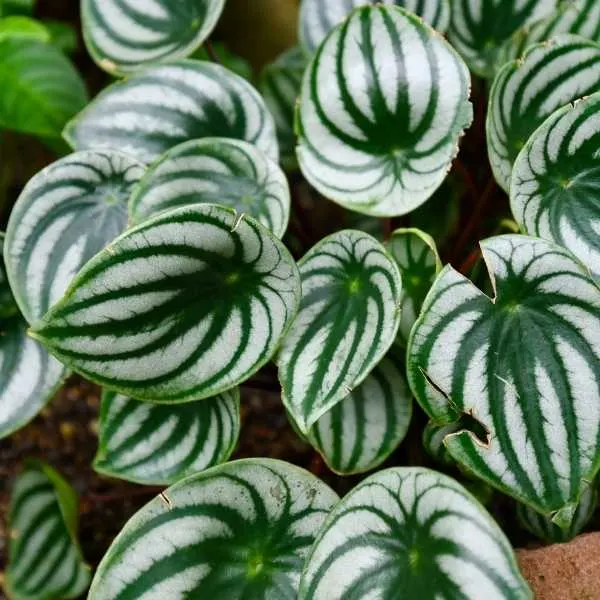
The Watermelon Peperomia is so named because its leaves closely resemble the striped watermelon peel. This plant is native to South America making it a tropical plant.
Full grown, the plant is 12 inches tall and 8 inches wide. It thrives in indirect sunlight and well-drained moist soil. When grown out of doors this plant does best in zones 10a to 12b.
When grown indoors this plant needs warm temperatures (normally household temperatures work well as long as the plant is kept out of drafts) and higher humidity (spray bottle or a room humidifier)
#3. Birkin Philodendron
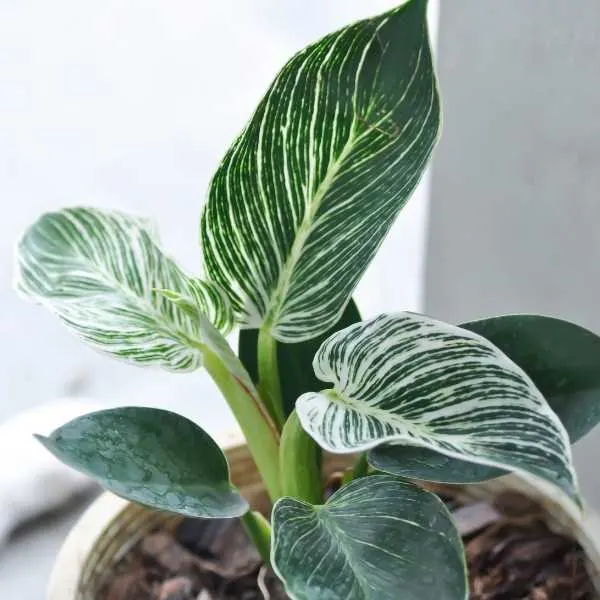
The Birkin Philodendron is known for its large glossy leaves with creamy yellow or white stripes. In some cases, the stripes have a reddish tone to them.
When grown indoors this plant rarely grows taller than 3 feet. They grow best in indirect sunlight and well-drained soil. When grown outside this plant should be grown in zones 9 through 11.
The Birkin Philodendron tend to be top heavy, so they often need a support pole to help keep the plant’s form.
When caring for the Birkin Philodendron you need to provide the plant with warmth and humidity and make sure that you don’t over water the plant. You should also gently wipe off the leaves with a damp cloth. This plant can be toxic to people and pets.
#4. Spiderwort
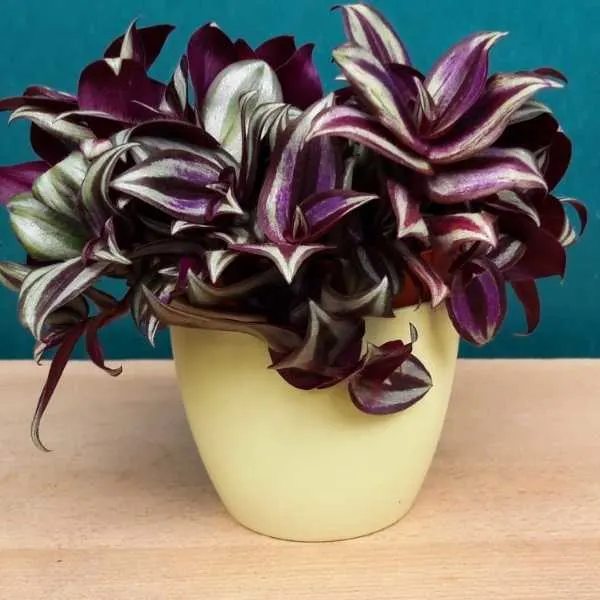
The Spiderwort plant is also known as the wandering Jew. This plant originates in Mexico and can grow up to 6 feet tall. The leaves of this plant is heart shaped with purple and green variegation and veins that run from the base to the tip.
The Wandering Jew makes a great indoor climbing plant, but it can spread so fast and become invasive when grown outdoors.
This plant likes indirect sunlight and well-drained moist soil. And it does best in temperatures 65 to 75 degrees Fahrenheit and prefers a humid climate.
#5. Snake Plant
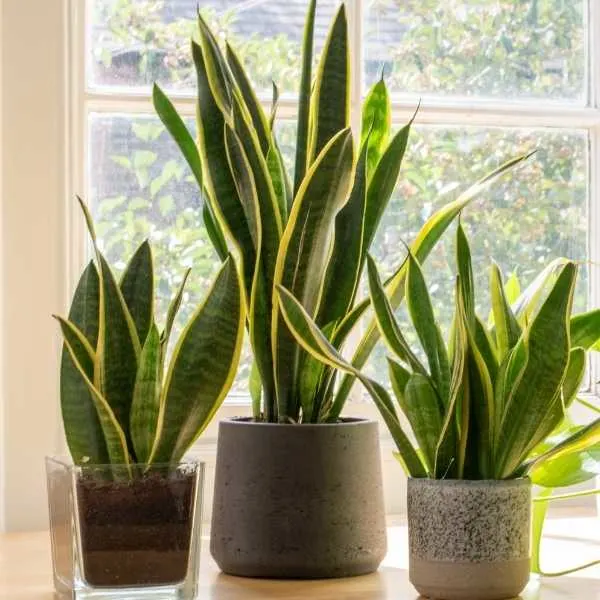
There are several varieties of the Snake Plant, which is also known, as Mother-in-laws tongue. It is a succulent plant with spear shaped leaves that grow straight up. The leaves of this plant are dark green with lighter green horizontal stripes.
Depending on whether you grow this plant indoors or outdoors, the Snake plant can grow anywhere from 6 inches to several feet tall.
This plant is known for providing healthy benefits to you and your home. The Snake plant cleans the air and removes toxins. It is also said to help calm and can be used to treat skin wounds and burns.
However, this plant should not be taken internally since it can be slightly toxic to children and pets.
The snake plant is easy to care for as long as you grow it in well-drained soil, and don’t over water it since it needs little water to maintain. In fact, it is one of the best drought tolerant houseplants available.
This plant prefers shade or partial sun and when grown outdoors does best in zones 9 through 11.
#6. Zebra Plant
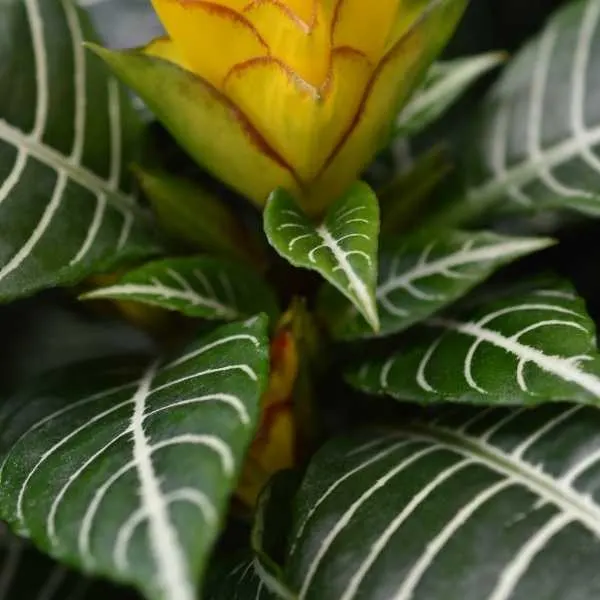
Although it can be grown out of door in zones 11 and 12, the Zebra plant is normally considered to be an indoor plant.
When planted outdoors this plant can reach a height of 6 feet and a width of 1 to 5 feet. Indoors the Zebra plant normally takes about 3 years to reach a height of 2 or 3 feet. The plant has dark green leaves with white veins.
The most stunning thing about the Zebra plant is that although there are several varieties of this plant all varieties flower. The flowers bloom on tall bracts with the blooms normally being yellow or golden in color.
This plant grows best when exposed to bright indirect sunlight, (making it one of the best low light indoor succulent plants) and moist soil. It also needs temperatures above 60 degrees Fahrenheit and 70% humidity. The Zebra plant originates in Brazil.
#7. Nerve Plant
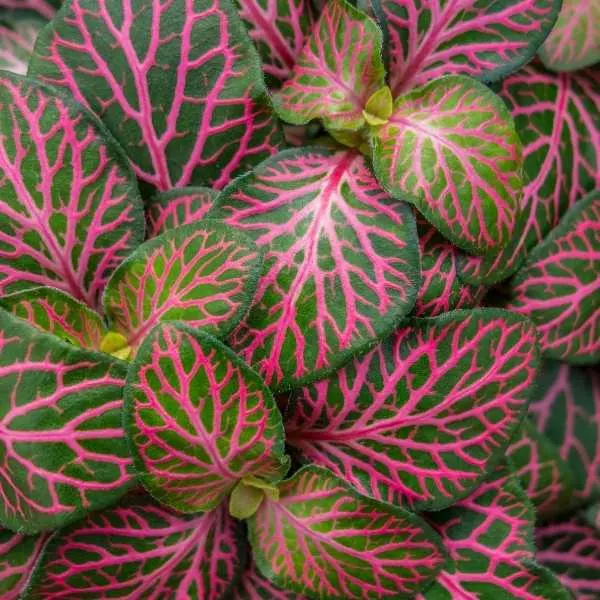
The Nerve plant is a spreading evergreen that originates in South America. What makes this plant stand out is that it has dark green leaves with either white or red veins. The red vein Nerve plants look exceptionally dramatic.
When grown indoors this plant normally grows to a height of 3 to 6 inches. It grows best in indirect filtered light and moist soil. It needs to be kept in temperatures between 60 and 80 degrees Fahrenheit and at least 50% humidity.
So, when it is grown outdoors it needs to be grown in warm moist climate such as can be found in zone 11. There are several different types of this plant.
#8. Pinstripe Calathea
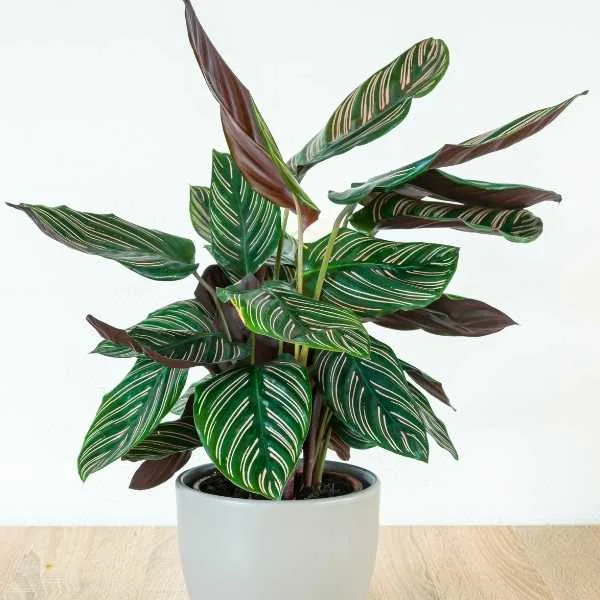
Native to South America the Pinstripe Calathea has large green leaves with groupings of pink stripes (that turn white as the plant matures) that grow at the end of long stems.
The underside of the leaves is a stunning reddish/purple. When grown indoors the plant grows about 2 feet tall.
The Pinstripe Calathea grows best when grown in indirect sunlight and moist well-drained soil. It is best to keep this plant in temperatures of 65 degrees Fahrenheit with 75% humidity.
When grown out of doors this plant thrives in zones 10 and 11. While this plant will flower it rarely flowers when grown indoors.
#9. Green Velvet Alocasia

The Green Velvet Alocasia is a perennial plant that originates from Asia and Australia. And it’s one of the most popular varieties of alocasia. This plant consists of large independent green leaves with white veins.
While this plant is grown indoors in most parts of the United States it can be grown outdoors in warmer regions such as zones 9a to 11. When grown indoors this plant can grow up to 3 feet.
It does need 2 hours of sunlight each day, but much more than that can be harmful to the plant. The soil for the Green Velvet Alocasia should be well drained and well ventilated. This is a plant that needs high humidity and temperatures that range from 65 to 75 degrees Fahrenheit.
Final Thoughts on Indoor Plants with Striped Leaves
While these are the most interesting of the indoor plants with striped leaves there are many more striped leaves plants for you to choose from such as Alocasia Polly, Round Leaf Calathea, and more. The unique look of these plants will add a bit of drama to your home.

